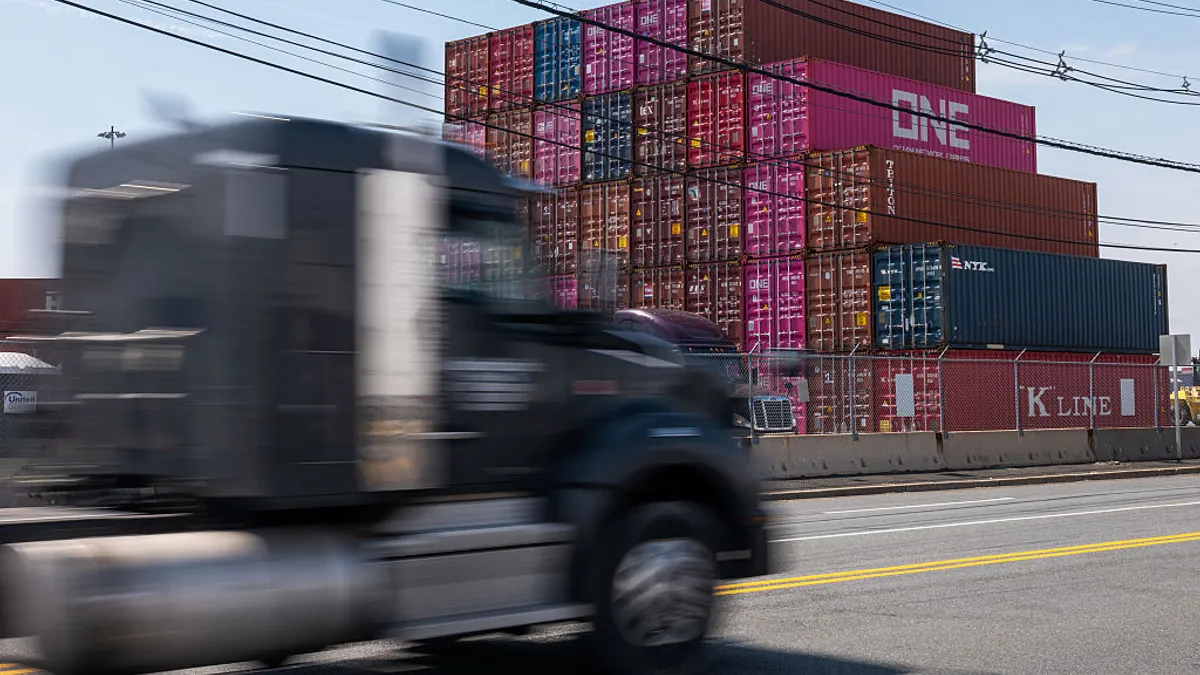Dive Brief:
- Graphic Packaging International has been dismissed from the containerboard price-fixing lawsuit that New York-based Artuso Pastry Foods Corp. filed against eight of the largest fiber product producers in North America, according to court documents.
- Judge Mary M. Rowland of the United States District Court for the Northern District of Illinois on Sept. 25 granted Artuso’s request to voluntarily dismiss GPI. Each party will handle its own attorney fees and related costs.
- The documents note the case will continue against the other defendants, which include Cascades, Georgia-Pacific, Greif, International Paper, Packaging Corporation of America, Pratt Industries and Smurfit Westrock.
Dive Insight:
The court documents did not state Artuso’s reasons for requesting that GPI be dismissed, and Graphic Packaging International declined to comment on litigation.
An attorney with antitrust defense expertise who reviewed the complaint, but is not involved in the case, explained that these dismissals sometimes occur in collusion cases if a specific defendant is deemed to be different enough from the other defendants.
All parties named in the complaint would need to be direct competitors with the same level of potential involvement in the alleged collusion, thus being “horizontal conspirators,” Emmanuel Hurtado, an associate at Stubbs Alderton & Markiles, told Packaging Dive. Absent that, “it's very difficult to prove that they're liable because they're not at the same level,” he said.
Although the court and parties did not publicly offer reasons for the action, known industry information could offer some clues. For instance, Graphic Packaging International’s primary customer base is for its ready-made consumer packaging products, not containerboard. That said, the lawsuit does include “containerboard sheets, linerboard sheets, and finished packaging products made from containerboard and/or linerboard” in its definition for “containerboard.”
GPI was not involved in the notable 2010 price-fixing case that Kleen Products brought against multiple containerboard producers, although several of those defendants are also named in Artuso’s current lawsuit.
GPI generally was not the first to initiate price increases on its products over the last couple years, although it did follow suit at times when a cluster of companies took similar actions.
Artuso would be unlikely to convince the court that fiber companies colluded based solely on a wave of nearly identical price increases occurring within days of each other, Hurtado suggested. Importantly, antitrust cases such as this one require the plaintiff to prove the named defendants all collaborated on some sort of advance conspiracy to raise prices. This is extremely difficult, Hurtado previously told Packaging Dive, unless there is evidence like “a ‘smoking gun’ email where they’re agreeing to do something.”
Often for these types of dismissals, attorneys for the plaintiff and a defendant communicate behind the scenes and come to an agreement, Hurtado said. The defendant’s attorney might state their position about why their client shouldn’t be involved, and then state their intention to file a motion to dismiss. This can result in an agreement for the plaintiff to voluntarily dismiss that particular defendant.
Dismissals are conducted on a case-by-case basis and it’s difficult to determine if other defendants could follow GPI’s removal, Hurtado said. Each defendant must prove its own case.
“It's very unlikely that they would get out of the case unless they can prove that they're in a different position, or a different industry, or that there's something distinguishing about them — or that they're just willing to settle and get out of the case quicker,” he said.
While voluntary dismissals sometimes can signal the two parties officially reached a settlement, potentially with money involved, Hurtado suggested that’s unlikely in this case considering how early-stage the lawsuit is.
GPI was “dismissed without prejudice.” That means although it was released from the case, it could be called back later if new information comes to light of its potential involvement. Still, “in these cases where it's a voluntary dismissal, where the plaintiff is letting [the defendant] out of the case on their own, you usually don't get information about it” after the dismissal, Hurtado said.
All defendants have until Oct. 20 to respond to the initial complaint. If any responses are motions to dismiss, Artuso's deadline to file opposition is Dec. 19. Defendants would then have until Jan. 20 to reply.
This is a significantly longer briefing schedule than what is typical in most civil cases, according to Hurtado. “Courts frequently allow more time in antitrust cases because these cases are often complex and involve detailed factual allegations about markets, competition, and economic theories of harm,” he said.
It can take “a deep analysis of market definitions, standing, and the sufficiency of the alleged anticompetitive conduct” for defendants’ attorneys to develop a motion to dismiss, he said. Similarly, plaintiffs often need to “consult with economic experts and marshal substantial factual material to defend the sufficiency of their allegations.”
The longer schedule helps to ensure that the issues are fully briefed for the court. That’s critical “because a motion to dismiss is often the first major decision point in an antitrust case and can dispose of the claims entirely,” Hurtado said.










